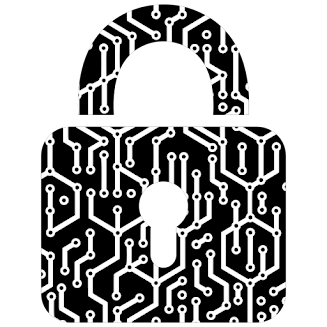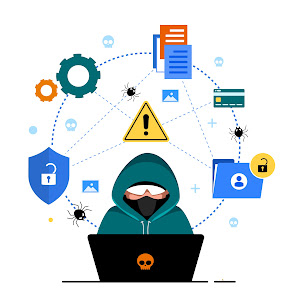Top Cyber Threats in 2024: What to Watch Out For and How to Stay Safe
As we move through 2024, cyber threats are more sophisticated and unpredictable than ever. With technology rapidly advancing and businesses relying more on digital systems, cybercriminals have a growing list of ways to cause trouble. Here’s a breakdown of the top cyber threats we face in 2024 and some straightforward tips to help you stay one step ahead.
 |
| 1. Cyber Security |
1. Ransomware and Double Extortion Attacks
Ransomware attacks are no longer just about locking your files. In 2024, hackers are going the extra mile with “double extortion” tactics. Not only do they demand money to unlock your data, but they also threaten to leak sensitive information if you refuse to pay.
What Makes These Attacks Dangerous?
- Targeting Essential Services: Industries like healthcare, finance, and energy are high-value targets because they can’t afford any downtime.
- Smart Attack Methods: Hackers are using advanced phishing tricks and exploiting weak remote connections to break in.
 |
| 2. Cyber Threat |
2. Phishing Scams with a High-Tech Twist
Phishing is an old trick, but it’s getting more sophisticated thanks to AI. Attackers now use AI to create highly convincing fake emails, texts, and even deepfake audio messages. These new phishing scams can be incredibly hard to detect.
How They Work in 2024
- AI-Generated Content: AI tools allow cybercriminals to mimic voices and faces, making their messages sound more realistic.
- Social Media Phishing: Attackers use social media to gather information and make their attacks feel personal.
- Business Email Compromise (BEC): Cybercriminals hack corporate email accounts to reroute payments or steal sensitive info.
 |
| 3. Phishing Scam |
3. Supply Chain Attacks: Weak Links Cause Big Problems
Cybercriminals know that an organization is only as strong as its weakest link. In 2024, hackers are targeting vendors and suppliers to gain access to larger companies. Even if your security is solid, an insecure third-party partner can still put you at risk.
How They’re Hitting the Supply Chain
- Compromised Software Updates: Attackers sneak malicious code into software updates, infecting companies that use those programs.
- Small Vendors as Entry Points: Cybercriminals often go after smaller, less secure companies to reach bigger targets.
 |
| 4. Cyber Security |
4. AI-Powered Attacks: Smarter Malware and Sneakier Hacks
AI isn’t just a tool for good—it’s also being used to create more advanced cyber threats. In 2024, cybercriminals use AI to make their attacks smarter, faster, and harder to detect. They can adapt on the fly, finding new ways around security systems.
Types of AI-Powered Threats
- Adaptive Malware: AI-driven malware can “learn” and adjust its tactics, making it harder to catch.
- Enhanced Social Engineering: AI tools create highly believable fake messages, fooling people into sharing sensitive information.
 |
| 5. Cyber Attack |
5. IoT Vulnerabilities: Smart Devices, Serious Risks
The Internet of Things (IoT) has brought many benefits, but it also creates a lot of security gaps. In 2024, hackers are exploiting vulnerabilities in IoT devices—from smart appliances to industrial machines—to infiltrate networks.
Why IoT Devices Are Vulnerable
- Weak Passwords and No Updates: Many IoT devices don’t have strong passwords or regular updates, making them easy targets.
- DDoS Attacks: Attackers hijack these devices to launch Distributed Denial of Service (DDoS) attacks, overwhelming systems and causing them to crash.
 |
| 6. Cyber Lock |
6. Cloud Security Risks: Exposing Data in Remote Work Setups
As companies continue relying on cloud services, the risk of cloud-based attacks grows. In 2024, attackers are taking advantage of misconfigured cloud settings, allowing them to access sensitive data or disrupt services.
Cloud Security Weak Points
- Misconfigured Settings: Simple setup mistakes can make data accessible to outsiders.
- Data Theft: If cloud storage is compromised, attackers can take sensitive information and use it for blackmail or sell it.
7. Insider Threats: Risks From Within
Not all threats come from outside. Insider threats—employees or contractors with access to sensitive information—are a growing problem in 2024. Sometimes, these insiders accidentally compromise data, but some act with malicious intent.
Types of Insider Threats
- Careless Employees: People might lose devices, open phishing emails, or fail to secure sensitive files.
- Malicious Insiders: Occasionally, someone inside the organization deliberately misuses access for financial gain or revenge.
 |
| 7. Insider Threats |
8. Quantum Computing: Future Threats on the Horizon
Quantum computing may sound futuristic, but its development could pose a major cybersecurity threat in the coming years. Quantum computers might eventually break the encryption that protects sensitive data, putting everything from financial transactions to personal information at risk.
Potential Threats from Quantum Computing
- Breaking Encryption: Quantum computing could render current encryption methods obsolete, exposing private communications.
- Data Harvesting for Future Use: Some attackers are already gathering encrypted data now, with the hope of decoding it in the future as quantum computing matures.
How to Stay Ahead of Cyber Threats in 2024
 |
| 8. Data Security |
The best defense against today’s cyber threats is a proactive, layered approach to security. Regularly assess your risk, train employees to recognize common scams, and have an action plan for when things go wrong. Investing in the latest security tools and keeping systems updated are key to staying safe in an unpredictable cyber landscape.





0 Comments
Any Doubts Feel Free And Drop A Comment!